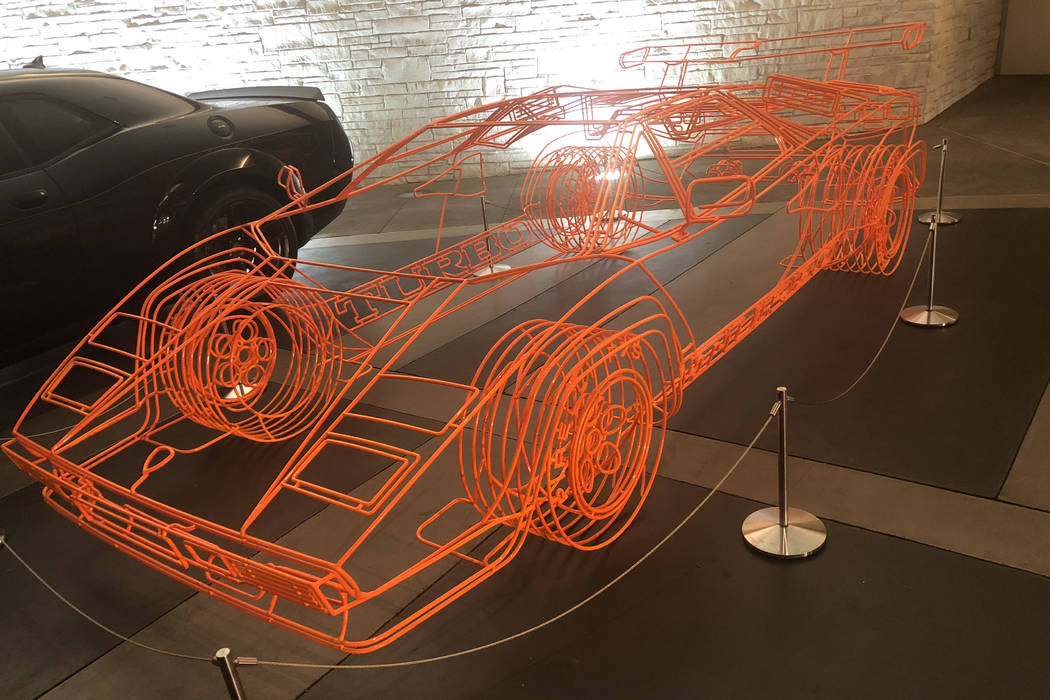
The Palms Hotel in Las Vegas has an impressive art program and world class art collection. The work was placed on the property during a $650 million renovation of the property in 2018. I have blogged about other works at the Palms, but the piece seen here, entitled Twin Turbo, is one of my favorites. It is literally parked outside the main entrance under the porte cochere. The location of the sculpture is perhaps my favorite aspect of the experience. It is unexpected and immersed in an environment where vehicles are on display — projecting the status of their owners.
The porte cochere is like a theater for the glamorous guests to be seen publicly before they are escorted off to their private suite or back into their automobiles. The porte cochere is an active busy place with people coming and going, staff and guests rushing about — animated conversations, bags, packages, taxis and Uber drivers. With all the activity, noise and distraction it is easy to walk past the work without noticing it.
The piece was created by multi-disciplinary British artist Benedict Radcliffe, who is known widely for creating life-sized wire sculptures of vehicles. Born in 1976 and trained as an architect, Radcliffe turned his attention and skills toward his artistic pursuits. He works out of a studio in London and has completed works that include London Taxi, Mazda 323S , Ferrari F40 and Blueprint (Porsche 934) at 1:15 scale.
The work shown here is a fluorescent-orange wire-frame replica of a Lamborghini Twin Turbo Countach made of 3/8” steel rods.
That might mean something to a car enthusiast, but it means very little to me other than it is a luxury, high-performance vehicle that I will never drive. I did not grow up in a “car” family. My dad would seek out a vehicle that had been sitting on the used car lot for several years collecting dust, negotiate a rock bottom price and drive it until the wheels fell off. I have never been fully immersed in “car culture,” but that doesn’t get in the way of me appreciating this work. It is a complex form described with lines. I had a drawing teacher once challenge me to describe a complex object with as few lines as possible. It is much harder than it would seem. I admire the skill required to distill the form down to its essential line work. The color makes the work initially appear like a projection or computer animation — something other than a physical object, something unreal.

Another intriguing work of art for us to ponder. Thank you for this!